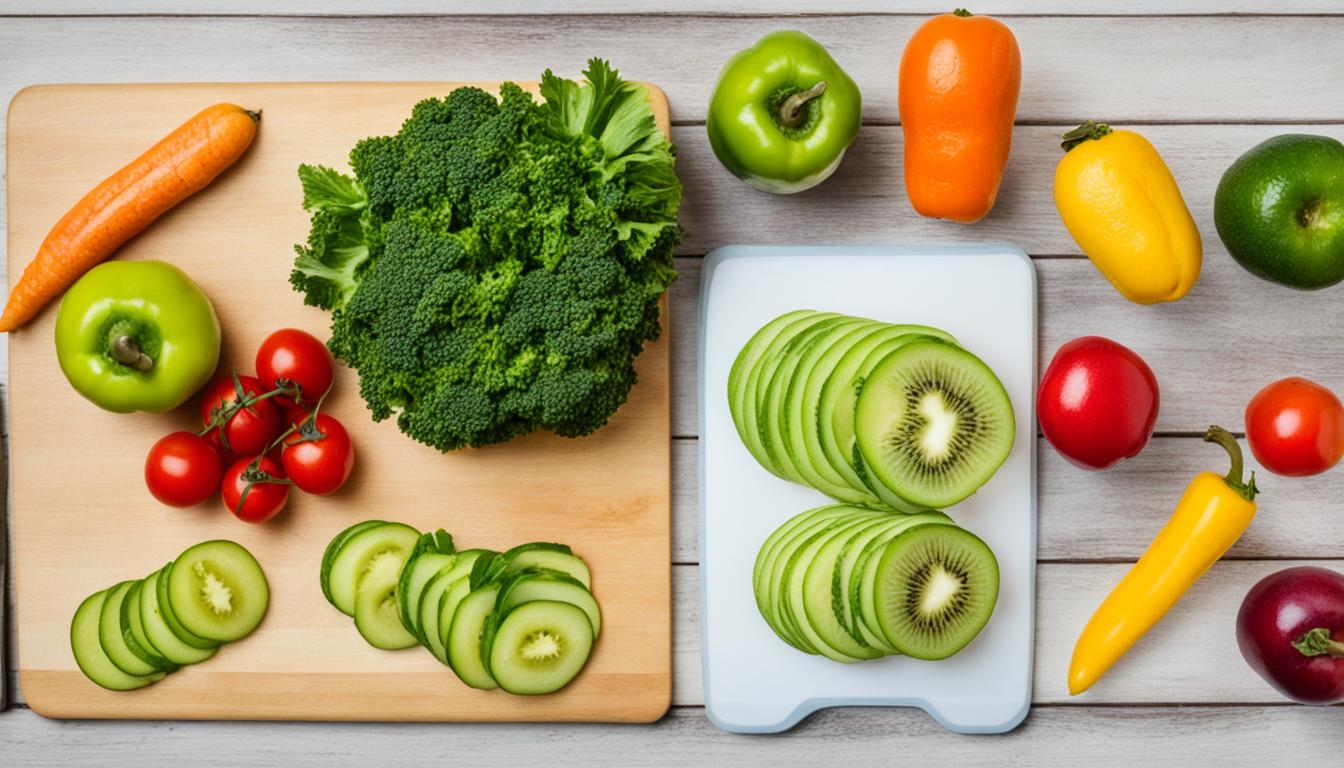When it comes to choosing the best cutting board, you may find yourself contemplating between plastic and wood. But which one is truly the superior choice? Are high-quality cutting boards made of plastic or wood? Let’s unravel this kitchen conundrum and explore the pros and cons of each material, so you can make an informed decision for your culinary endeavors.
The Advantages of Wood Cutting Boards
When it comes to choosing a cutting board, wood cutting boards offer several advantages that make them a popular choice among home cooks and professional chefs alike.
One of the key benefits of wood cutting boards is their durability. Made from high-quality hardwoods like maple, walnut, and cherry, these boards are built to last. They can withstand heavy use without showing signs of wear and tear, ensuring that you can rely on them for years to come.
Wood cutting boards are also gentle on knives. The natural, forgiving surface of wood helps to preserve the sharpness of your knives, reducing the need for frequent sharpening. This makes wood cutting boards an excellent choice for those who want to take good care of their kitchen tools.
Another advantage of wood cutting boards is their sanitary nature. Wood has natural antibacterial properties, making it a safe and hygienic choice for food preparation. Studies have shown that certain woods, such as bamboo, can absorb bacteria and trap them within the board, effectively killing them off.
Aside from their functional benefits, wood cutting boards are also aesthetically pleasing. The warm, natural tones and grain patterns of wood can add a touch of elegance to your kitchen. Whether you have a rustic farmhouse-style kitchen or a modern culinary space, a wood cutting board can complement your decor.
However, it’s worth noting that wood cutting boards require regular upkeep to maintain their quality. They should be regularly cleaned with warm soapy water, dried thoroughly, and periodically treated with food-safe oil to prevent drying out and warping. Additionally, compared to plastic cutting boards, wood boards can be more difficult to clean due to their porous surface.
Wood cutting boards also tend to be heavier and more unwieldy than their plastic counterparts. This can make them less convenient to move around or store, especially if you have limited kitchen space.
Despite these considerations, many cooks and chefs swear by the benefits of wood cutting boards. Their durability, knife-friendliness, and natural sanitation properties make them a favorite choice for those who value quality and aesthetics in their kitchen tools.
The Benefits of Plastic Cutting Boards
When it comes to choosing a cutting board, plastic options have a number of advantages that make them a popular choice in many kitchens. Plastic cutting boards are not only inexpensive, but they are also lightweight and space efficient. Their affordability and versatility make them accessible to a wide range of users.
One of the key benefits of plastic cutting boards is their ease of cleaning and sanitization. Many plastic boards are dishwasher safe, making them a convenient choice for busy households. Their smooth surface is also easy to wipe clean, preventing the buildup of bacteria and food particles.
Plastic cutting boards are also gentle on the knife’s edge, reducing the risk of dulling the blade. This is particularly important for those who value the longevity of their knives and want to maintain their sharpness over time.
However, it’s worth noting that plastic cutting boards are prone to dings and scratches. These imperfections can harbor bacteria, compromising food safety if not properly cleaned and cared for. Regular inspection and replacement of heavily damaged plastic boards are necessary to minimize this risk.
Another point to consider is that plastic cutting boards can wear down knives faster than wood. The hard surface of plastic can cause the knife’s edge to degrade more rapidly, leading to more frequent sharpening or the need for knife replacements.
Overall, plastic cutting boards offer an affordable and convenient option for everyday use in the kitchen. They are easy to clean, gentle on knives, and space efficient. While they do require proper maintenance and attention to food safety, they can provide a practical solution for home cooks and professional chefs alike.
Take a look at the image below to see an example of a plastic cutting board:
Tips for Choosing the Right Cutting Board
When it comes to choosing the right cutting board for your kitchen, there are a few factors to consider. The first is the material. Wood and plastic are the most common choices, with each having its pros and cons. Wood cutting boards are durable and gentle on knives, but they require regular cleaning and maintenance to prevent drying out. Plastic cutting boards, on the other hand, are inexpensive and easy to clean, but they can get scratched easily and may need to be replaced more often.
In addition to material, size is another important consideration. Choose a cutting board that is large enough to comfortably accommodate the food you typically prepare. A larger cutting board provides more surface area and allows you to work with multiple ingredients at once, reducing the risk of cross-contamination. However, make sure the board is still small enough to fit comfortably on your countertop or in your sink for cleaning.
Speaking of cleaning, it’s crucial to clean and sanitize your cutting board properly to prevent cross-contamination. After each use, wash it with hot, soapy water and thoroughly rinse it. You can also use a solution of one part vinegar to three parts water to sanitize the board. Be sure to replace your cutting board if it becomes heavily scarred or develops deep grooves that can trap bacteria.
By choosing the right cutting board and following these cleaning and maintenance tips, you can prevent cross-contamination and ensure the safety of your kitchen. Remember to replace old and worn-out cutting boards to maintain a hygienic environment. Happy cooking!
